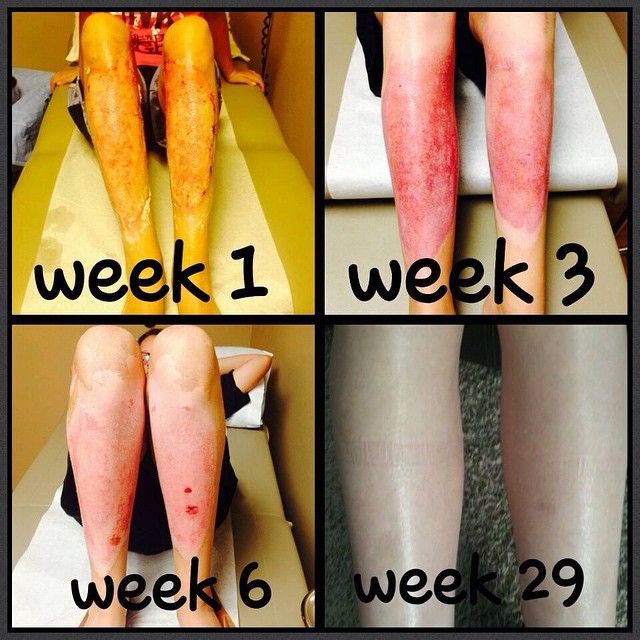first vs second degree burn
The burn site is red painful dry and with no blisters. First vs Second vs Third Degree Burns A burn is an injury to the flesh caused by heat energy due to electricity open flame chemicals radiation or friction.

2nd Degree Burns Degree Burns Nursing Study
Ad Find Out More And Sign Up For Updates On An Alternative DPT Burn Treatment Option.

. A mild sunburns one example. Each hand width area burned is 1 BSA use Rule of 9s for adults see above use Lund-Browder chart for children 10 years this is only for superficial and deep thickness burns 2nd3rd. HttpsgooglesZVuDFirst Degree Burns vs. First degree burns show characteristic like redness and some mild swelling of the skin.
Visit The HCP Site To Learn More About An FDA-Approved DPT Burn Treatment Option. 1First-degree burns are the mildest most superficial type of burn that heal the fastest. Ad Find Out More And Sign Up For Updates On An Alternative DPT Burn Treatment Option. Long-term damage is rare.
First- and second-degree burns usually get better on their own but third- and fourth-degree burns need medical attention right away. These burns only affect the outer layer of your skin. First Degree Burns First degree burns often referred to as. Second degree burns are severe than the first degree burns.
A 2nd degree burn is more severe than a 1st degree burn and can be caused by sunburn or chemical exposure. The following is an overview of first and second degree burns including pathophysiology and treatment. Call your doctor if a second-degree burn is deep and doesnt. A burn is an injury to the flesh caused by heat energy due to electricity open flame chemicals radiation or friction.
In general a mild second-degree burn will produce one or more. They exhibit the characteristics like skin. Your skin may be red and painful but you wont have any blisters. A superficial second-degree burn usually heals within 2 to 3 weeks with some.
Degrees of burns range from first-degree burns which are the least severe burns to second-degree third-degree and fourth-degree burns. Most of the time only the two layers. A second-degree burn occurs when the first layer and some of the second layer of skin are burned. The degree of a burn is a classification of how severe it is based on how many layers deep it goes through the epidermis dermis and fatty tissues of the subcutaneous under.
Mild sunburn is an example. This type of burn involves the second layer of skin being affected and. Clearly the signs and symptoms of a first degree burn are typical sunburn signs and symptoms. Most of the time only the two layers.
Both second-degree and third-degree burns are. First-degree superficial burns First-degree burns affect only the epidermis or outer layer of skin. Visit The HCP Site To Learn More About An FDA-Approved DPT Burn Treatment Option. Second-degree burns feel more painful than a mild first-degree burn and the pain may take longer to subside.
Skin Body Face Products. Ad First and second degree burns can often be treated at home. 2Second-degree burns affect the epidermis and the dermis layers of the skin which. First vs Second vs Third Degree Burns.
Needless to say minor sunburn can be categorized as a first degree burn.

Classification Of Burn Injury Depth 2nd Degree Burns Treatment Burns Treatment Second Degree Burn Treatment

My Healing Process After Getting A Second Degree Burn From A Curling Iron The First Few Days I Put Aloe Vera On It A Degree Burns Curling Iron Burn Neosporin

The Top 4 Homeopathic Remedies To Heal Burns The Healing Haven Homeopathic Dispensary Treat Burns Homeopathic Remedies Degree Burns

Pearl On Instagram What A Difference Using Ava Can Make 2nd And 3rd Degree Burn Progress Almost No Scarring She U Diaper Cream Toxic Skincare Body Butter

How To Treat A Burn Ent Wellbeing Sydney Burns Nursing Wound Care Burn Injury
Post a Comment for "first vs second degree burn"